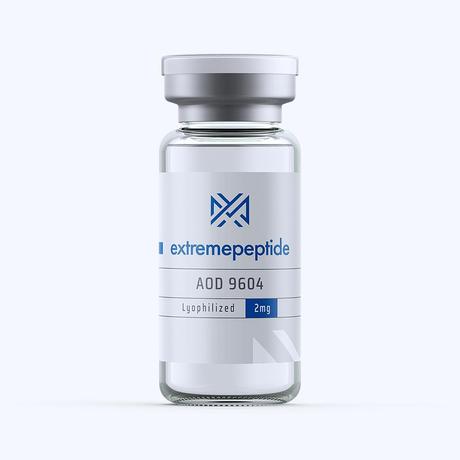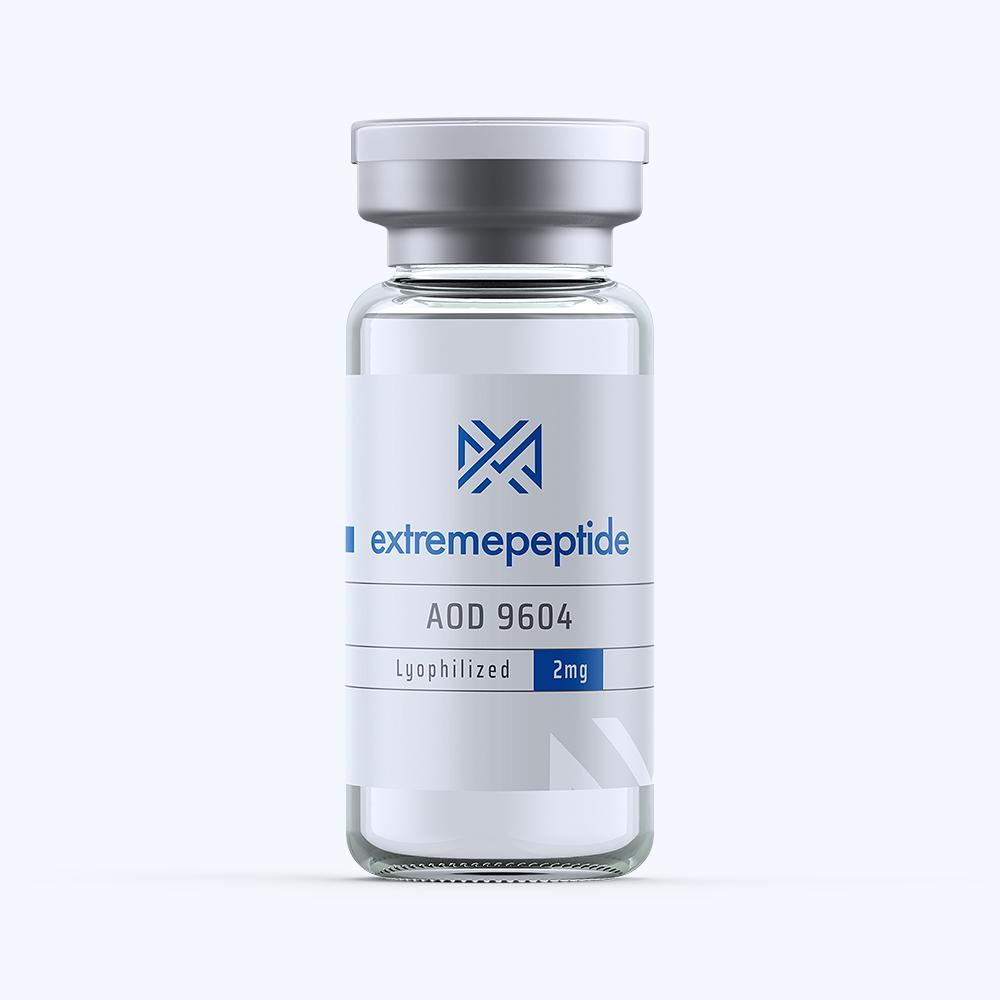Sale!


AOD 9604
Out of stock
$25.99$28.99
- Concentration
- 2 mg per vial
Free & Fast
Shipping
Earn
Rewards
Excellent
Service

$25.99$28.99
Free & Fast
Shipping
Earn
Rewards
Excellent
Service
| Molecular Formula | C78H123N23O23S2 |
| Molecular Weight | 1815.1 |
| Monoisotopic Mass | 1813.86035961 |
| Polar Area | 815 |
| Complexity | 3710 |
| XLogP | -4.8 |
| Heavy Atom Count | 126 |
| Hydrogen Bond Donor Count | 28 |
| Hydrogen Bond Acceptor Count | 28 |
| Rotatable Bond Count | 45 |
| Physical Appearance | Fine White Lyophilized Powder |
| Stability | Lyophilized protein is to be stored at -20°C. It is recommended to aliquot the reconstituted (dissolved) protein into several discrete vials in order to avoid repeated freezing and thawing. Reconstituted protein can be stored at 4°C |
| PubChem LCSS | AOD 9604 Laboratory Chemical Safety Summary |
| Property | Property Value |
|---|---|
| CID | 71300630 |
| CAS | 221231-10-3 |
| InChI | InChI=1S/C78H123N23O23S2/c1-9-41(8)62(101-68(115)47(18-14-28-86-78(83)84)91-69(116)50(29-38(2)3)95-63(110)45(79)30-43-19-21-44(104)22-20-43)75(122)100-61(40(6)7)74(121)94-49(23-25-56(80)105)67(114)98-55-37-126-125-36-54(65(112)88-32-57(106)89-51(76(123)124)31-42-15-11-10-12-16-42)97-70(117)52(34-102)90-58(107)33-87-64(111)48(24-26-59(108)109)93-73(120)60(39(4)5)99-71(118)53(35-103)96-66(113)46(92-72(55)119)17-13-27-85-77(81)82/h10-12, 15-16, 19-22, 38-41, 45-55, 60-62, 102-104H, 9, 13-14, 17-18, 23-37, 79H2, 1-8H3, (H2, 80, 105)(H, 87, 111)(H, 88, 112)(H, 89, 106)(H, 90, 107)(H, 91, 116)(H, 92, 119)(H, 93, 120)(H, 94, 121)(H, 95, 110)(H, 96, 113)(H, 97, 117)(H, 98, 114)(H, 99, 118)(H, 100, 122)(H, 101, 115)(H, 108, 109)(H, 123, 124)(H4, 81, 82, 85)(H4, 83, 84, 86)/t41-, 45-, 46-, 47-, 48-, 49-, 50-, 51-, 52-, 53-, 54-, 55-, 60-, 61-, 62-/m0/s1 |
| InChIKey | GVIYUKXRXPXMQM-BPXGDYAESA-N |
| Isomeric SMILES | CC[C@H](C)[C@@H](C(=O)N[C@@H](C(C)C)C(=O)N[C@@H](CCC(=O)N)C(=O)N[C@H]1CSSC[C@H](NC(=O)[C@@H](NC(=O)CNC(=O)[C@@H](NC(=O)[C@@H](NC(=O)[C@@H](NC(=O)[C@@H](NC1=O)CCCNC(=N)N)CO)C(C)C)CCC(=O)O)CO)C(=O)NCC(=O)N[C@@H](CC2=CC=CC=C2)C(=O)O)NC(=O)[C@H](CCCNC(=N)N)NC(=O)[C@H](CC(C)C)NC(=O)[C@H](CC3=CC=C(C=C3)O)N |
| Canonical SMILES | CCC(C)C(C(=O)NC(C(C)C)C(=O)NC(CCC(=O)N)C(=O)NC1CSSCC(NC(=O)C(NC(=O)CNC(=O)C(NC(=O)C(NC(=O)C(NC(=O)C(NC1=O)CCCNC(=N)N)CO)C(C)C)CCC(=O)O)CO)C(=O)NCC(=O)NC(CC2=CC=CC=C2)C(=O)O)NC(=O)C(CCCNC(=N)N)NC(=O)C(CC(C)C)NC(=O)C(CC3=CC=C(C=C3)O)N |
| IUPAC Name | (2S)-2-[[2-[[(4R, 7S, 13S, 16S, 19S, 22S, 25R)-25-[[(2S)-5-amino-2-[[(2S)-2-[[(2S, 3S)-2-[[(2S)-2-[[(2S)-2-[[(2S)-2-amino-3-(4-hydroxyphenyl)propanoyl]amino]-4-methylpentanoyl]amino]-5-carbamimidamidopentanoyl]amino]-3-methylpentanoyl]amino]-3-methylbutanoyl]amino]-5-oxopentanoyl]amino]-22-(3-carbamimidamidopropyl)-13-(2-carboxyethyl)-7, 19-bis(hydroxymethyl)-6, 9, 12, 15, 18, 21, 24-heptaoxo-16-propan-2-yl-1, 2-dithia-5, 8, 11, 14, 17, 20, 23-heptazacyclohexacosane-4-carbonyl]amino]acetyl]amino]-3-phenylpropanoic acid |
Generated by Extreme Peptide with Open Babel, version 2.3.1, http://openbabel.org (accessed April 20, 2025)
Accurate research is our priority.
Get 25% off your first order and all the latest information on events, sales, & offers.
We care about keeping your data private. Read our Privacy Policy.

